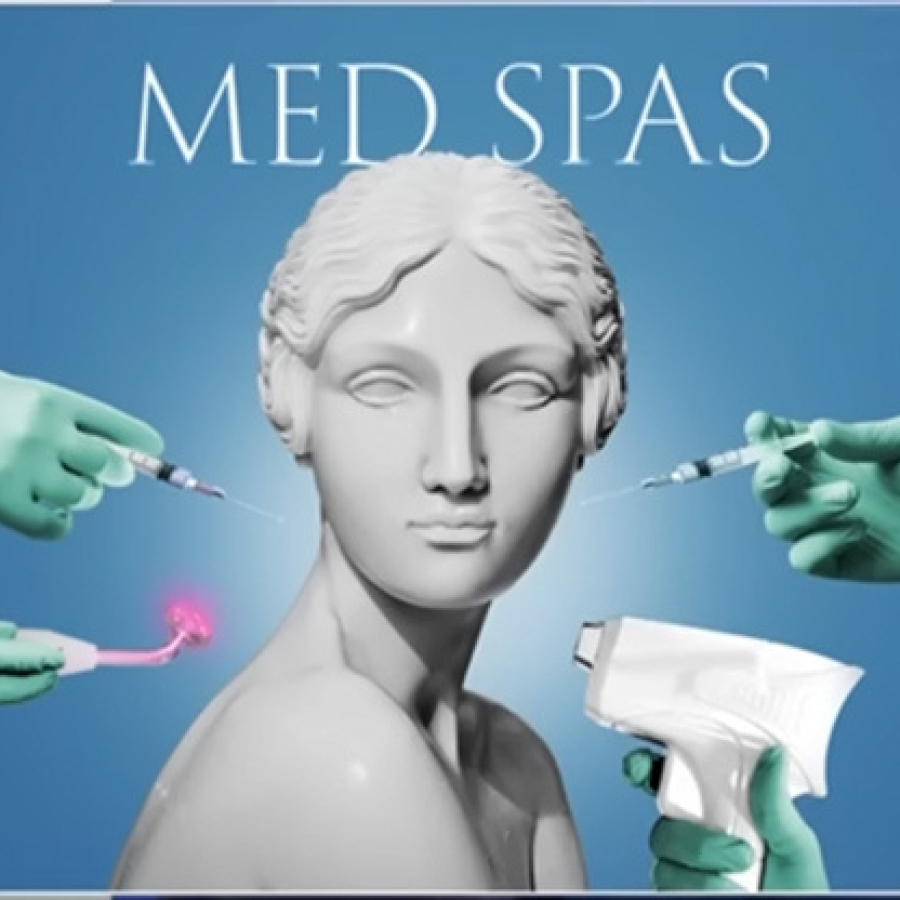
By Alex R. Thiersch, JD, CEO of the American Med Spa Association (AmSpa)
Takeaways
- The Guidelines for Non-surgical Medical Practices (Medical Spas) was released by AmSpa last week and has received many comments and questions, which AmSpa appreciates.
- It is imperative that medical aesthetic professionals read the actual guidelines and not depend on other industry groups or gossip to shape their understanding and opinion. Most answers to your questions are within the guidelines
- AmSpa released "The 10 Basic Rules of Medical Aesthetic Compliance" as an abbreviated version of the full guidelines to easily digest. See them at the bottom of this letter.
- The guidelines are only recommendations, not law.
- The guidelines are based almost entirely on existing state law and are not new concepts for legally and safely operating a medical aesthetic practice. Although state-by-state laws do vary, the guidelines are meant to provide national recommendations for operating in a safe, compliant manner.
- The shaping of these guidelines into their final version is an inclusive, responsive process, and AmSpa will continue to hold roundtables and respond to questions regarding the guidelines until they are finalized.
Hi folks, Alex Thiersch here, CEO of AmSpa. I wanted to take a quick second to comment on some of the questions AmSpa has received regarding the Guidelines for Non-Surgical Medical Practices (Medical Spas) that were published last week. Thanks to all of you for the feedback, questions and clarification. Preparing and publishing these guidelines was a huge endeavor for AmSpa, and we knew that we'd have lots of questions and more than a few pointed comments. Our main goal is to be transparent and ensure that all of your questions are answered.
And while I expected some pushback—there are too many interested parties involved for there not to be—and I knew that some clarification would be needed, what I really want now is pretty straightforward: I implore everyone to read the actual guidelines. The whole document, not just a few pages. Although the overwhelming response has been positive and supportive, most of the negative feedback that's been received has been from folks who haven't even read the guidelines—or, in some cases, who received misinformation or mischaracterizations from other groups. I promise—most, if not all of your questions are answered right there.
In order to streamline understanding of the guidelines, AmSpa has done two additional things:
- We produced a list of "The 10 Basic Rules of Aesthetic Compliance" that breaks down the guidelines into an easily digestible format; and
- We added notes at the end of each section in the guidelines that were intended to clarify questions and make the document easy to understand.
As you dive into the guidelines, please remember a few things.
- These are recommended guidelines—they are not binding law, nor are they final. AmSpa welcomes feedback, and we're happy to explain how we arrived at any of the provisions.
- The guidelines are a reflection of what the law already is. In preparing them, we didn't seek to prepare new rules. Rather, we summarized what the law already is in almost all 50 states. The fact that some of this seems new to some of you is not because the law doesn't exist; it's just that it's been unknown, unclear and often ignored for the past 20 years. But, I assure you, we have a strong basis of support for all of these guidelines.
I'e included "The 10 Rules" below. This should, hopefully, ease some of the concerns of folks who have questions and haven't had time yet to work through all of the guidelines. We will also continue to host roundtable sessions, respond to concerns and provide answers to any questions we get. We want this to be an inclusive, responsive process, and while we know that much discussion will follow, my primary goal at this point is to ensure that the entire set of guidelines is laid out and understood.
Please let us know if you have any questions or comments; that's what we're here for. Thanks to all of you for your support.
The 10 Basic Rules of Aesthetic Compliance
- Medical spa treatments are medical treatments. It doesn't matter if the procedure is "non-invasive," if it has little to no downtime, or whether it uses a laser, ultrasound or radiofrequency. If the procedure impacts or affects living tissue, it is a medical procedure. If it's a medical procedure, the business offering it is regulated as medical facility/doctor's office.
- Medical spas are regulated as medical facilities (i.e. doctor's offices). No matter what you call it – aesthetic center, medi-spa, medical spa, laser center – if it offers medical aesthetic treatments, it is a doctor's office. That means it is regulated as a doctor's office.
- Medical spas shall be supervised by a physician (or NP or PA, under appropriate circumstances). Medical spas are medical facilities and, therefore, a supervising physician must be in charge of the medical spa. Typically called a "medical director," this physician is responsible for all medical treatment provided at the medical spa. Any patient receiving treatment at the medical spa is a patient of the physician. In some states, provided all requirements of applicable laws and regulations are met, a nurse practitioner (NP) or physician assistant (PA) may assume the role of medical director.
- The supervising physician (or NP/PA, under appropriate circumstances) must be trained, qualified and experienced in ALL medical treatments performed at the medical spa. The physician supervising the medical spa (or, if all requirements are met, the NP/PA) must be trained and qualified in all the medical treatments being offered. In order to properly and lawfully supervise and delegate medical procedures, you must first understand that medical procedure, including all contraindications and potential adverse outcomes. It doesn't matter how qualified the practitioner providing the treatment is – the supervising physician must be qualified as well. For example, just because the registered nurse (RN) injector is experienced, doesn't mean the supervising physician doesn't need to be. Both must be experienced and qualified in the treatment being performed.
- A face-to-face examination, including appropriate history and physical, must be performed by a physician (or NP/PA, under appropriate circumstances) who is trained, qualified and experienced in the desired medical procedure prior to performing the initial medical procedure. Before any medical aesthetic procedure is performed, the patient must go through a face-to-face examination with the physician, PA or NP. This may be done through telemedicine, provided all state requirements are met. If a series of treatments is being offered (i.e. laser packages or multiple neurotoxin treatments), the face-to-face exam may not be required before every treatment, but it definitely is required before the first treatment.
- Medical spa treatments must be performed by trained, qualified and experienced practitioners under the supervision of a physician (or NP/PA, under appropriate circumstances). The supervising physician must ensure that all treatments are provided by practitioners who are trained and qualified to perform them.
- Standard operating procedures (SOPs) and treatment protocols must be implemented and approved by the supervising physician (or NP/PA, under appropriate circumstances). The supervising physician is responsible for all medical treatment that is provided at the medical spa. Therefore, the physician is responsible for ensuring that proper protocols are in place so that the entire team knows what to do in the event of an adverse outcome.
- Only RNs and above (i.e. NPs, PAs and physicians) may inject. Aestheticians, licensed practical nurses (LPNs), licensed vocational nurses (LVNs) and medical assistants (MAs) cannot inject neurotoxins or fillers or perform polydioxanone (PDO) thread-lifting. These procedures must be performed by an RN or higher (NP, PA or MD/DO) who is trained and qualified in the procedure.
- State ownership and revenue-sharing laws must be obeyed. Some states follow the corporate practice of medicine (CPM), which states that only doctors (or doctor-owned corporations) may own medical practices. Other states have variations of this rule, as well as rules regarding the splitting of medical revenue. Regardless, medical spas must follow the ownership and revenue-sharing rules of the state in which they are located.
- Patient privacy must be protected at all times. Medical spas are regulated as doctor's offices and, therefore, they must observe all patient privacy rules that apply to doctor's offices. No exceptions.





